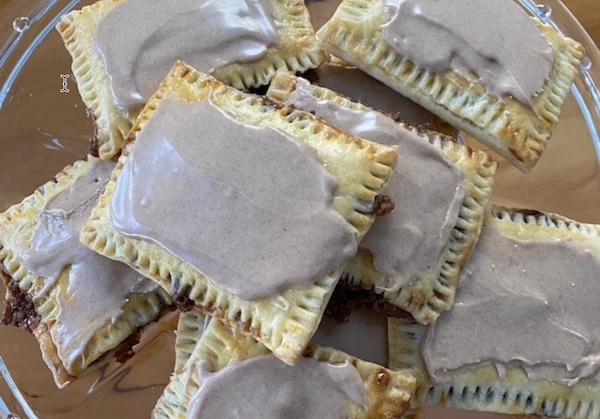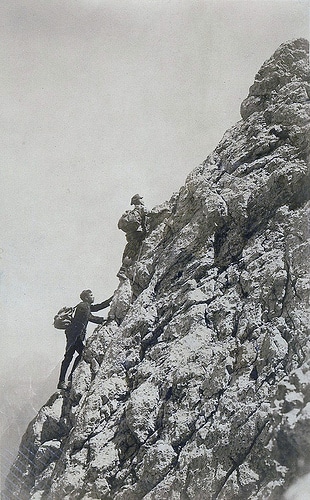
The story of invisible ink — as detailed by Brett and Kate a number of years ago — goes back millenia. Used mainly as an espionage device, militaries and governments the world over continually worked on ways to discreetly send messages between covert parties.
These “inks” started as very simple concoctions in two primary categories: 1) an acidic liquid applied directly to paper or parchment, like lemon juice, vinegar, or even urine, which would then be revealed by heat exposure (as in the gloriously cheesy National Treasure), or 2) “sympathetic” inks in which some type of chemical solution acts as the ink, which is then revealed by the application of a different solution, called a “reagent.”
When invisible ink technology progressed in the 20th century, especially with the development of increasingly complex chemical solutions during WWII, the invisible inks of old became mostly a relic, and for us moderns, a very fun weekend experiment to do with our children.
My 4-year-old son Graham and I experimented with both types of inks — one of which failed and one of which was an astounding and surprisingly fun success.
Let’s take a look.
Method #1: Acidic Ink (Lemon Juice)
In theory, the most tried and true method of homemade invisible ink is the simple application of pure lemon juice (or, as mentioned, a number of other acids) to a sheet of paper. After the paper is fully dried, you apply heat, and voila! the “ink” is revealed. The acid eats the fibrous material and therefore burns more easily; when heat is applied, it browns the areas that have been written on.
This is, by far, the most common method you’ll see when searching the internet for how to make invisible ink. After trying it out, however, I’m guessing that most of those writers and publishers never tried it firsthand.
I definitely get the appeal of this method; it’s as simple as juicing a lemon into a small dish and then applying that juice to paper with a small paintbrush or a cotton swab. No mess, no big cleanup. That’s a huge positive, especially with kids.
Unfortunately, after trying various heating methods, I could never get the ink to actually show up. Hair dryer, hot light bulb, I even held the paper above our gas range for a few minutes. None of it worked. Consequently, I’m not buying Nic Cage’s easy reveal in National Treasure.
So I did some sleuthing and came to find that it takes quite a bit of time for the paper to actually burn and for your secret message to appear. Some folks reported holding the paper over a hot light bulb for upwards of 20 minutes! Others even baked the paper for a while. Those requirements are a hard pass from me. Plus, kids and heat sources just don’t mix real well.
After the initial excitement of embarking on a fun new activity, both father and son were disappointed at the lackluster results.
So we hit the books (aka Google) again in search of a different method that would actually work. Turns out it took a sympathetic ink and a fun reagent to find success.
Method #2: Water & Baking Soda + Rubbing Alcohol & Turmeric
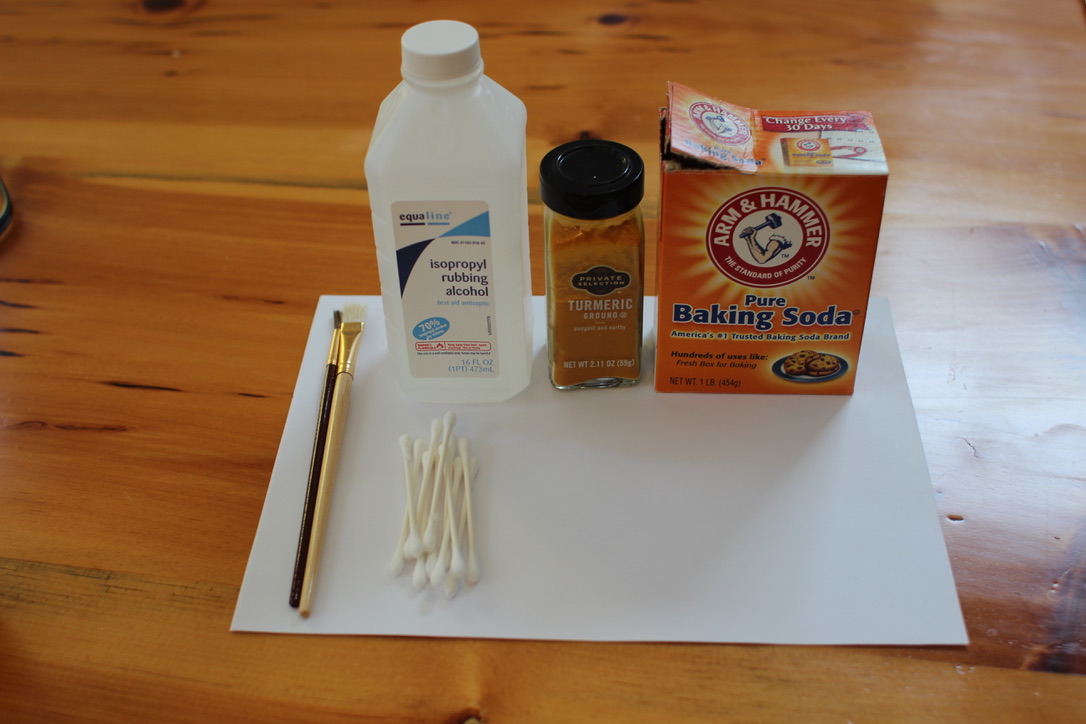
Supplies/Ingredients:
- Paper
- Small paintbrushes and/or cotton swabs
- Baking soda
- Rubbing alcohol
- Turmeric
While this method, courtesy of Research Parent, requires just a little more setup and a little more cleanup, it was well worth it. The fact that it requires two solutions was actually more fun — there was more for Graham to help with versus just watching Dad slice and juice a lemon. Procuring the needed supplies may require a trip to the store, but you may already have this stuff at home.
1. Make your invisible ink.
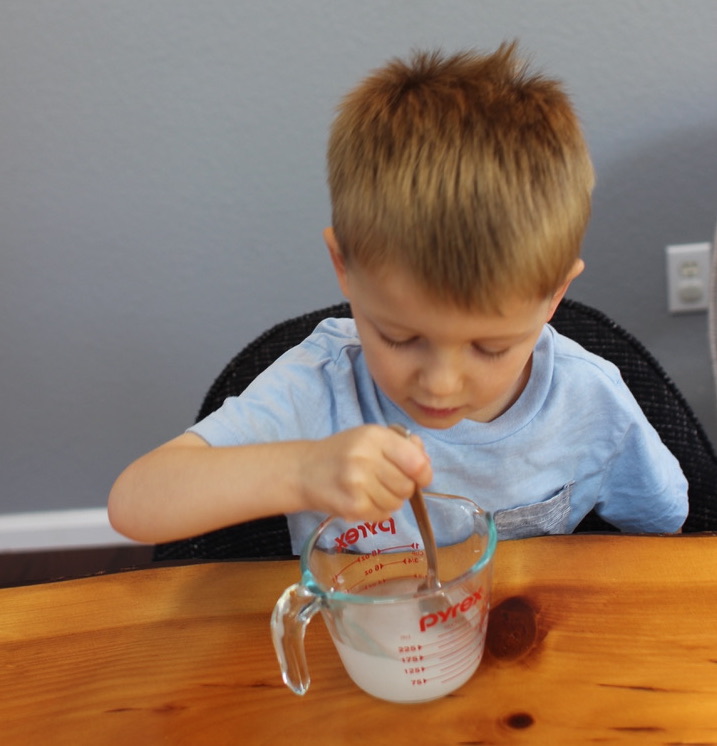
Combine and mix thoroughly:
- 1/2 cup water
- 1 tablespoon baking soda
2. Write/Draw Message or Art
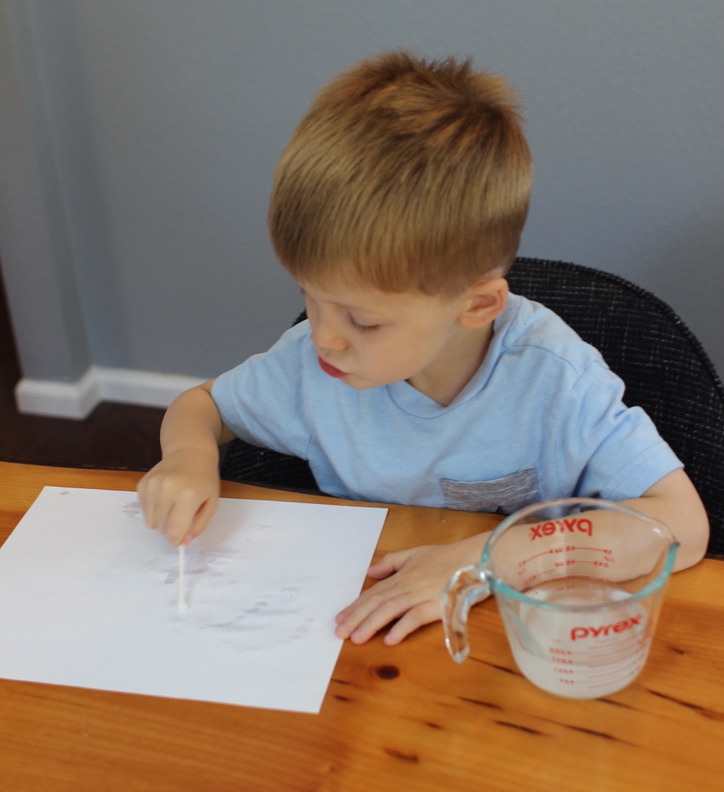
Use a small paintbrush or cotton swab to write a message or draw a picture on a sheet of paper. In the case of my 4-year-old, a piece of abstract art was the order of the day.
Let the paper fully dry (15 minutes or so should do it, depending on how much ink you used).
3. Whip up the reagent.
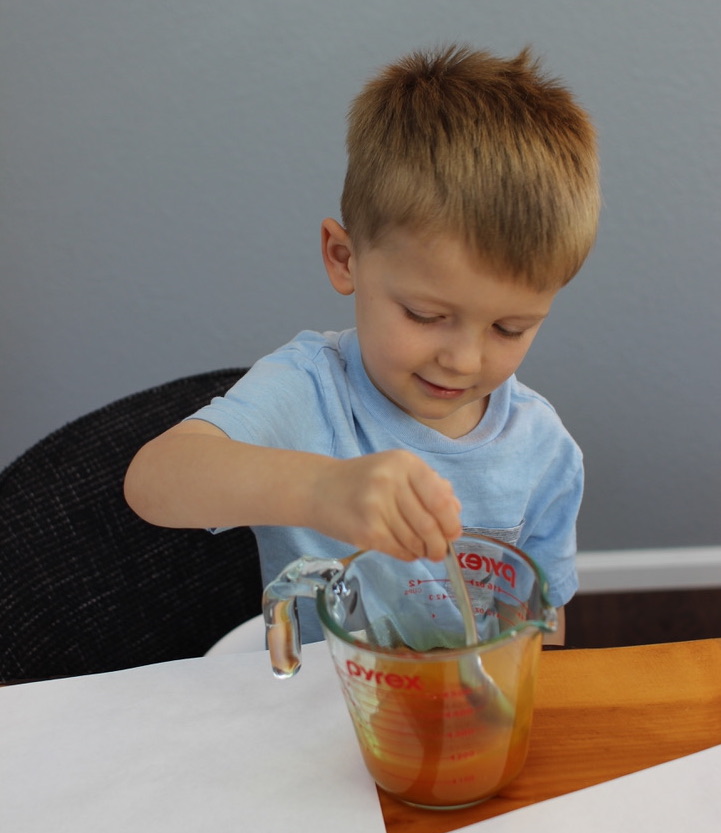
Combine and mix thoroughly:
- 1/2 cup rubbing alcohol
- 1 teaspoon turmeric
4. Reveal Hidden Message/Artwork
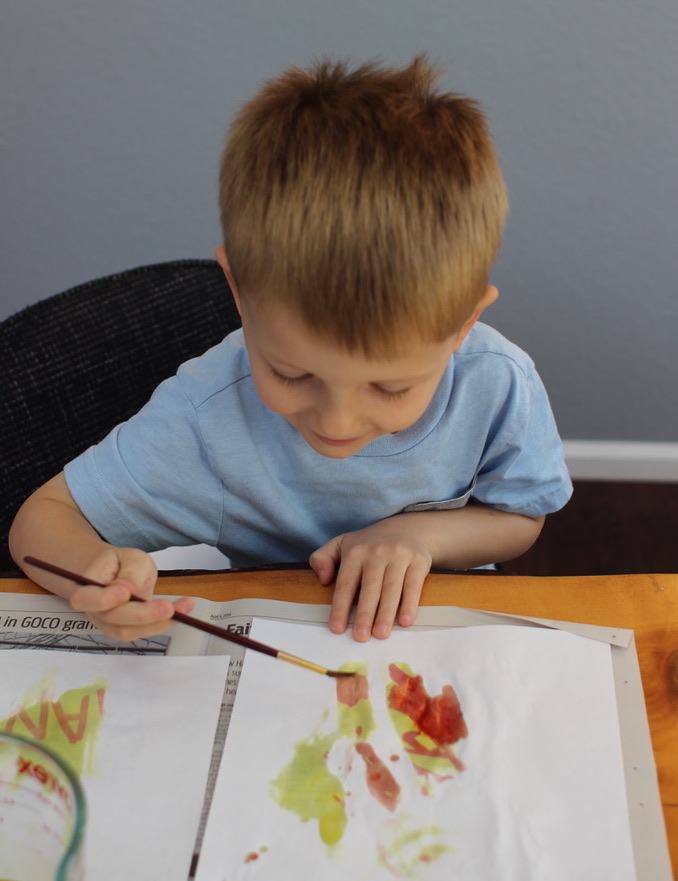
First, it’s a good idea to put down a couple layers of newspaper so you don’t stain whatever work surface you’re using. If you have messy kids, it may also be a good idea to give them aprons or something; turmeric leaves a lovely bright yellow stain on everything it touches.
Using a small paintbrush (the cotton swab is too small for this step), paint the sheet of paper with the reagent and see your message revealed in bright red ink.
Even as a thirty-something, it was pretty darn cool to see how well this method worked. And my son got a big ol’ smile on his face as he saw his abstract art appear.
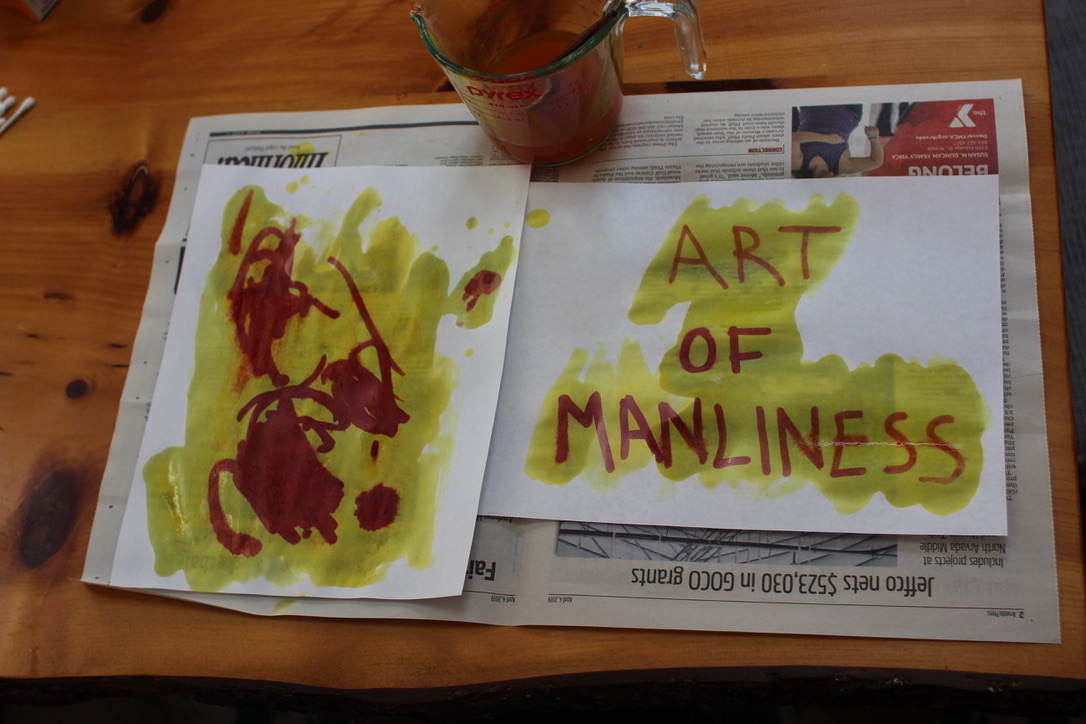
Feel free to be heavy handed with the ink — I did sort of a light swabbing with writing the “Art of Manliness” and the red message that came to life was a little bit lightly colored as well. Graham’s art was pretty heavily inked, though, and ended up with a really full hue.

You can just barely see the outlines of a dried message on the paper.
The other benefit is that this ink wasn’t as noticeable on the paper before being revealed. The lemon juice sort of burns through the fibers and made obvious marks on the paper where the message was, even when it dried. The baking soda and water solution was visible when wet, but dried really nicely.

The above message, revealed!
If you’re on the prowl for a fun weekend project to do you with your kids, look no further. Abandon the easy appeal of acid + heat and go for the more involved and also more fun method of solution + reagent.



